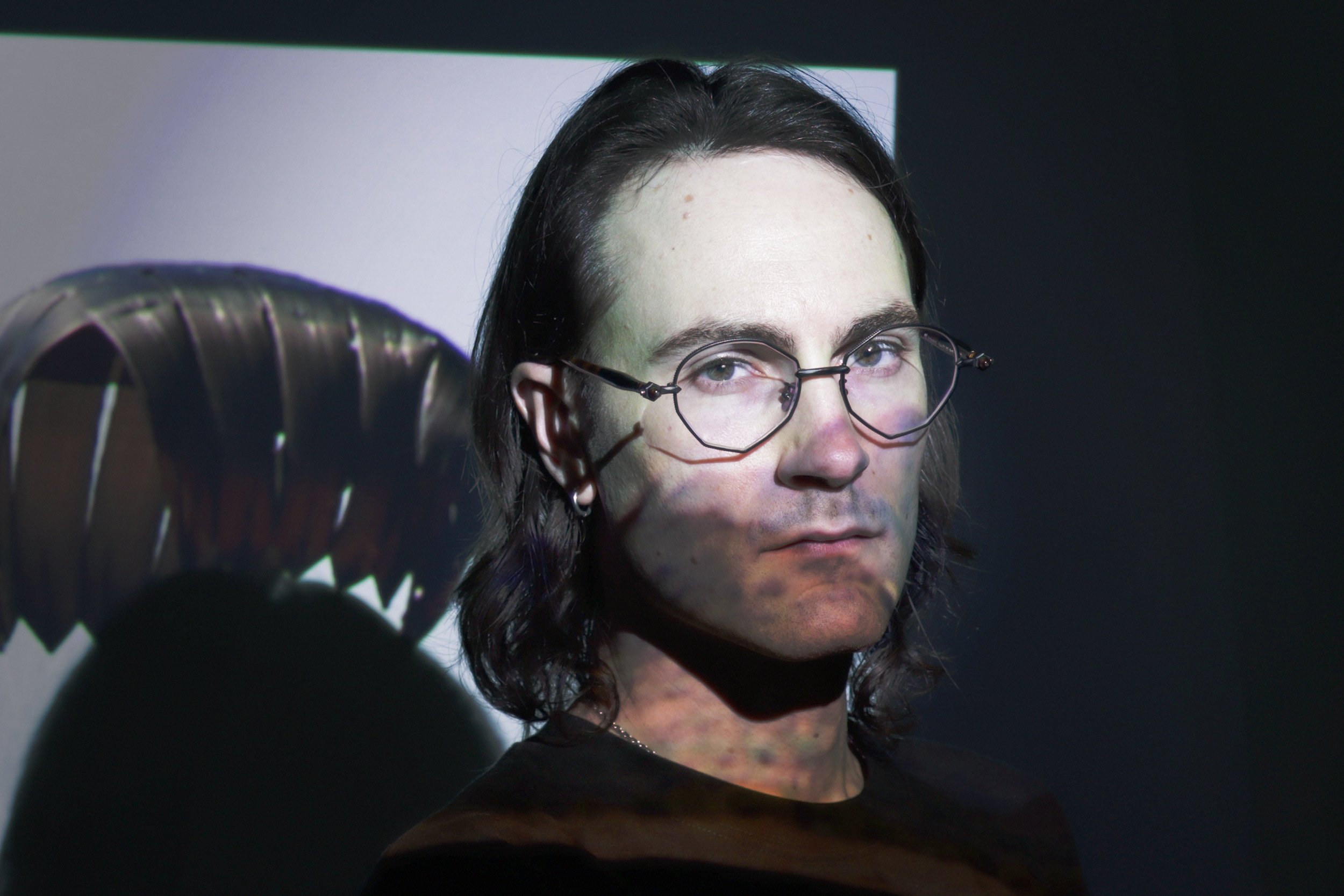Steven Cottingham
Lines Drawn in Sand Become a Valley
From February 6 to March 29, 2025
Opening on February 6 at 6 pm
— Facebook event
Steven Cottingham's practice emphasizes the constructed nature of images, not to underline their fakeness, but rather to reveal the technological systems and social conditions through which meaning emerges. Lines Drawn in Sand Become a Valley brings together a series of video works that reflect on wargames and simulations, questioning their use. Do they act as representations of war or, rather, as models for war? Further, how do ideologies of war and emergency depend on the conflation between real and representational to sustain legitimacy?
The exhibition’s two main video works, As far as the drone can see and Magic Circles Ringed in Barbed Wire, while generally genre-bending in form, might be contextualized as virtual photojournalism. Here, the artist forays into the virtual world of Arma 3, a military simulation widely used by law-enforcement training programs, private military companies, and wargamers alike. Beyond documenting the virtual world, however, Cottingham plays the game to subvert — or invade it. He interrupts the landscape with its own historicity. He replaces billboards with archival photos documenting real war refugees who might have traversed the land. Complicating its surface, within the so-called photorealistic world of the game, he embeds commemorative paintings that bring a reminder of the broader sociopolitical contexts in which wars occur — the people, women especially, who have dealt with war from distant proximities. Perhaps most transgressively, he introduces a female player and genderfluid cell of fighters into the entirely male-inhabited world, thereby narrowing in on how doctrines of war intercede upon identity and gender, and how their rehearsal within virtual frameworks omits certain real conditions of war and invisibilizes its casualties.
Works
As far as the drone can see (2023) — 15 min. 50 sec.
As far as the drone can see is filmed inside the virtual world of Arma 3. Arma 3 is a military simulation (called MilSim) widely used by law enforcement training programs, private military companies, and wargamers. Despite its highly realistic portrayal of military tactics and post-conflict reconstruction, there are zero women combatants, civilians, or characters in the simulator. The artist bridges the gender gap by introducing a female journalist and genderfluid guerrilla fighters into the simulation, following their covert insurrection as they navigate the complex intersections of gender and war. Through these deeply mediated representations of war, the film explores how gender roles on the homefront have been historically shaped by the construction of gender roles on the battlefront, and vice versa.
Magic Circles Ringed in Barbed Wire (2024) — 16 min. 25 sec.
Exploring the evolving relationship between war, simulation, and entertainment, this work discusses how virtual imagery penetrates the befuddled battlespace of war. From tactical training to simulations of domestic upheaval and international warfare, wargames create narratives that inform military and political decisions. While gaming has long been inspired by war, NATO militaries now use commercially available games and software to replicate battlefield conditions. Have the tools used for gaming, for training, and for fighting become one and the same?
Virtual vanishing points (2024) — 4-channel video with sound, vinyl-clad chainlink mesh, 3 min. loop
Various tabletop wargames are subjected to low-frequency sonic vibrations, transforming their tactical components into kaleidoscopic abstractions. The games include Next War: Taiwan, Situationist Guy Debord’s Le Jeu de la guerre, NATO’s 3D-printed Mission Task Verbs, and an augmented reality sandtable. Under the influence of sine waves, Chladni patterns* emerge, scattering game pieces into intricate formations that resemble fractal figures rather than military maneuvers.
Cadpat cucoloris (2025) — Digital projection, dimensions variable
The Canadian Disruptive Pattern (CADPAT), introduced in 1997, is the world’s first computer-generated digital camouflage, replacing hand-painted or printed designs typically created by artists. Its pixelated micropatterns mimic the natural ability of foliage to disrupt silhouettes through an interplay of light and shadow. However, its development alongside the rise of digital cameras suggests that the primary target of deception is not the human eye, but a virtual gaze. In this work, CADPAT is transformed into a cucoloris — a theatrical tool that simulates light filtering through a leafy canopy — immersing the gallery within a virtual forest.
Steven Cottingham is a visual artist and filmmaker based in Vancouver. Recent solo exhibitions include Wil Aballe Art Projects (Vancouver, 2023, 2020), ENTRE (Vienna, 2023), VRAL (Milan, 2022), Natalia Hug Galerie (Cologne, 2022), and Alternator Centre for Contemporary Art (Kelowna, 2020), with group exhibitions and screenings at Center for Performance Research (New York, 2024), Milan Machinima Festival (2024), The 8th Floor (New York, 2023), Catriona Jeffries (Vancouver, 2023, 2021), Artists Space (New York, 2022), Vector Festival (Toronto, 2022), The Polygon Gallery (North Vancouver, 2021), Avecez art space (Havana, 2019), and The Museum of Capitalism (Oakland, 2017). He has participated in residencies at the Whitney Independent Study Program (New York, 2021–2022), Fogo Island Arts (2016), and the Skowhegan School of Painting and Sculpture (2015). In 2024–2025 he will be artist-in-residence with the Canadian Forces Artists Program.
Outreach
Meet the artist
On February 8, 2025 from 2 pm to 4 pm
For his exhibition, Steven Cottingham will be at the gallery on Saturday afternoon on February 8. Come see the exhibition and chat with the artist!
Other exhibition
Miljohn Ruperto
Janus
From February 6 to March 29, 2025
Dazibao thanks the artist for his generous collaboration as well as its advisory committee for their support.
Dazibao receives financial support from the Conseil des arts et des lettres du Québec, the Canada Council for the Arts, the Conseil des arts de Montréal, the ministère de la Culture et des Communications and the Ville de Montréal.
Dazibao acknowledges that it is located on the unceded territory of the Kanien'kehá: ka Nation and that Tiohtiá:ke / Montreal is historically known as a gathering place for many First Nations, and today, is home to a diverse population of Indigenous as well as other peoples. Guided by ethics of respect, listening, and awareness, Dazibao commits to a continued reflection regarding the deep-rooted and systemic challenges tied to accessibility and inclusivity in the arts and beyond, and endeavors to apply such reflections to all aspects of its activities and governance.














